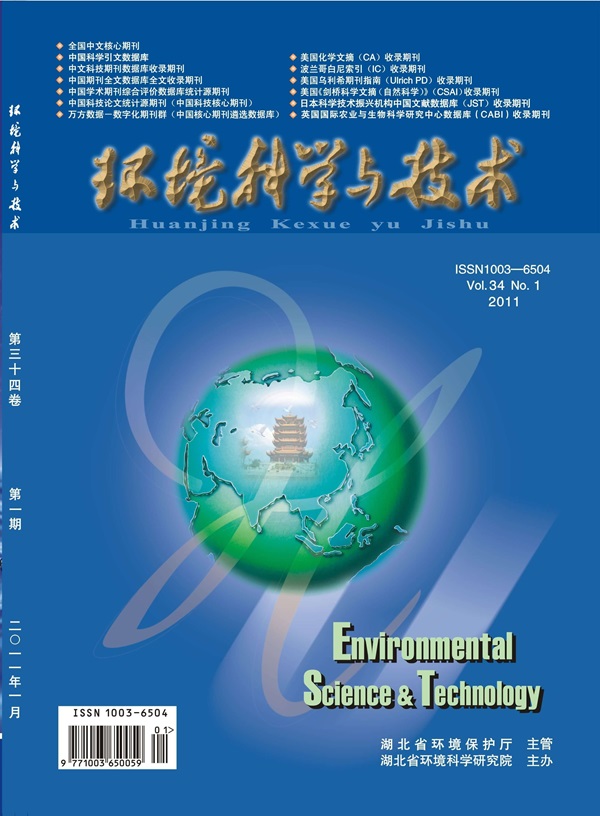Regulating the Electronic Structure of Cu Single-Atom Catalysts toward Enhanced Electro-Fenton Degradation of Organic Contaminants via 1O2 and •OH
IF 10.8
1区 环境科学与生态学
Q1 ENGINEERING, ENVIRONMENTAL
引用次数: 0
Abstract
Heterogeneous electro-Fenton degradation with 1O2 and •OH generated from O2 reduction is cost-effective for the removal of refractory organic pollutants from wastewater. As 1O2 is more tolerant to background constituents such as salt ions and a high pH value than •OH, tuning the production of 1O2 and •OH is important for efficient electro-Fenton degradation. However, it remains a great challenge to selectively produce 1O2 and improve the species yield. Herein, the electronic structure of atomically dispersed Cu–N4 sites was regulated by doping electron-deficient B into porous hollow carbon microspheres (CuBN-HCMs), which improved *O2 adsorption and significantly enhanced 1O2 selectivity in electro-Fenton degradation. Its 1O2 yield was 2.3 times higher than that of a Cu single-atom catalyst without B doping. Meanwhile, •OH was simultaneously generated as a minor species. The CuBN-HCMs were efficient for the electro-Fenton degradation of phenol, sulfamethoxazole, and bisphenol A with a high mineralization efficiency. Its kinetic constants showed insignificant changes under various anions and a wide pH range of 1–9. More importantly, it was energy-efficient for treating actual coking wastewater with a low energy consumption of 19.0 kWh kgCOD–1. The superior performance of the CuBN-HCMs was contributed from 1O2 and •OH and its high 1O2 selectivity.

通过 1O2 和 -OH 调节铜单原子催化剂的电子结构以增强电-芬顿降解有机污染物的能力
利用氧气还原产生的 1O2 和 -OH 进行异相电-芬顿降解,可经济有效地去除废水中的难降解有机污染物。与 -OH 相比,1O2 对盐离子和高 pH 值等背景成分的耐受性更强,因此调整 1O2 和 -OH 的生成量对于高效电-芬顿降解非常重要。然而,如何选择性地产生 1O2 并提高物种产量仍是一个巨大的挑战。本文通过在多孔空心碳微球(CuBN-HCMs)中掺杂缺电子的B来调节原子分散的Cu-N4位点的电子结构,从而改善了*O2的吸附,并显著提高了电-芬顿降解中1O2的选择性。其 1O2 产率是未掺入 B 的 Cu 单原子催化剂的 2.3 倍。同时,-OH 作为次要物种同时生成。CuBN-HCMs 在苯酚、磺胺甲恶唑和双酚 A 的电-芬顿降解中具有很高的矿化效率。其动力学常数在各种阴离子和 1-9 宽 pH 值范围内变化不大。更重要的是,它在处理实际的焦化废水时非常节能,能耗低至 19.0 kWh kgCOD-1。CuBN-HCMs 的优异性能来自于 1O2 和 -OH 及其对 1O2 的高选择性。
本文章由计算机程序翻译,如有差异,请以英文原文为准。
求助全文
约1分钟内获得全文
求助全文
来源期刊

环境科学与技术
环境科学-工程:环境
CiteScore
17.50
自引率
9.60%
发文量
12359
审稿时长
2.8 months
期刊介绍:
Environmental Science & Technology (ES&T) is a co-sponsored academic and technical magazine by the Hubei Provincial Environmental Protection Bureau and the Hubei Provincial Academy of Environmental Sciences.
Environmental Science & Technology (ES&T) holds the status of Chinese core journals, scientific papers source journals of China, Chinese Science Citation Database source journals, and Chinese Academic Journal Comprehensive Evaluation Database source journals. This publication focuses on the academic field of environmental protection, featuring articles related to environmental protection and technical advancements.
 求助内容:
求助内容: 应助结果提醒方式:
应助结果提醒方式:


